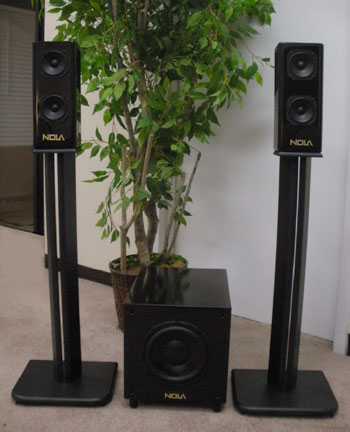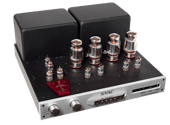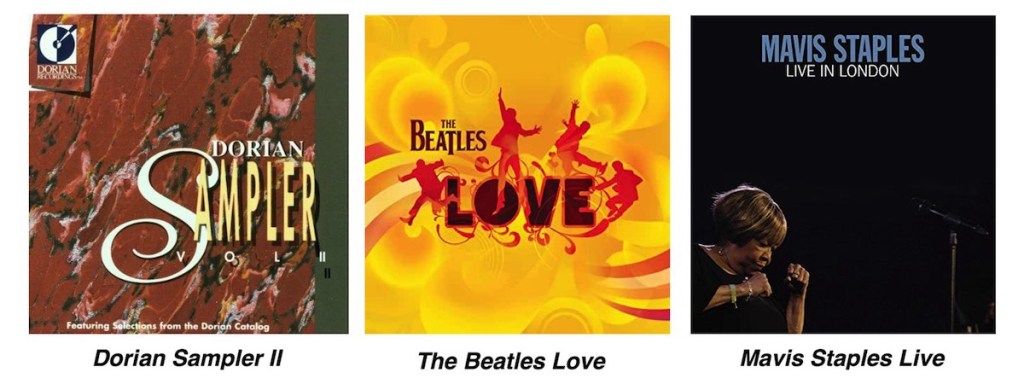
Near Field Nirvana Goes Afar!
by Ric Mancuso, Audiophile Audition | Feb 2, 2020 | Component Reviews
 NOLA Accent Speaker Technologies is what the company is called. You
may have known the designer, Carl Marchisotto and brands by different
badges over the years, ALON and Dahlquist. Carl is mostly associated
for producing rather large speakers with multiple drivers utilizing
ribbons and dynamic drivers with open baffle construction of
cabinetry. Always considered to be in the top echelon of high-end
speaker design, garnering awards from audio shows, users and the
press.
NOLA Accent Speaker Technologies is what the company is called. You
may have known the designer, Carl Marchisotto and brands by different
badges over the years, ALON and Dahlquist. Carl is mostly associated
for producing rather large speakers with multiple drivers utilizing
ribbons and dynamic drivers with open baffle construction of
cabinetry. Always considered to be in the top echelon of high-end
speaker design, garnering awards from audio shows, users and the
press.
NOLA also makes a successful series of smaller monitor speakers called the Boxer. I had owned a pair a few years ago and was impressed with the sonic performance ratio per dollar. Something to understand up front, Carl prefers tube amplification to pair up with his speakers. I would suspect the ultimate voicing of his speakers is related to tubes. I have heard SS amps sound really good too, but pairing up is like trying to find the five-leaf clover.
I ran across just the NOLA Brio monitors at an audio show in Denver a couple of years ago. They were mounted on top of flimsy cheap particle board audio stands with no subs. NOLA used their own Blue Thunder speaker cables along with an Audio Research CD player and amp. The sound was open and life like, sans the bass, they only go down to 90 Hz. They were being played very loud with some Elvis vintage vocal music bordering on too loud. It was a very large room, but you could hear the potential of this little 5½" wide, 12" tall open baffle speaker. I think they would have been a great desk top speaker without a sub at that point.
Brio's grow Up, err Down? Low Bass
OK, so the speaker system evolved with an addition of a sub, the Brio Trio and yet another sub to become the Brio Quatro system. I was curious about a system that apparently had no tweeter and sounded to so clear and detailed. I approached NOLA to review the four-speaker system. They said yes, with the proviso that they ship the VAC 170I tube integrated amp to couple with the system. I was thinking, Wow, we have a $5K speaker system with an amp that retails for about $10K This no cheap date! I realized, this is high-end territory and NOLA agreed to ship the convoy of gear out to Portland, OR.

VAC Sigma 170I Integrated 85 watt Amplifier
The shipment arrived with multiple boxes with a couple of sheets of paper with a hand drawn hookup guide for all the Blue Thunder speaker cables with their plug-in assignments to the satellites and subs. Lots of twist ties to undo and some thinking required to get it right. Also, some 31" stands to put together, which was challenging. Carl says the speakers sound optimal with a lossy stand rather than using heavy iron Weber BBQ like black spiked boat anchors. I find most British monitor speakers sound better on lossy stands as well. It's about allowing the system to breathe, similar to how musical instruments do this to give life and richness to the sound.
I unboxed the speakers to find their high gloss black finish to be very appealing to my aesthetic taste. Speakers were not very heavy and of course, were open baffle design. Only two 3½inch drivers in the cabinet! I'm thinking my brain will not translate listening over optical judgement. Where are the tweeters? NOLA $$$$ speakers always have ribbons, dome tweeters or a combination of them, right? Not the Brio. One driver is totally without a crossover, the other one only has one capacitor. That one must be the tweeter? The speaker is 90db efficient.
On to the subwoofers. Two of them with class AB 250 watt amps with phase, frequency and gain controls. Each subwoofer features a long throw 8" bass driver. Also, a bunch of ins and outs for line level and/or high impedance speaker connections. NOLA prefers the speaker connections that go from the 8 ohm taps of the amp to the speaker, then cables from the speaker to the subwoofer. That makes for a lot spaghetti. Speaker level is always in sync with phase set up with that method. There is always just a fraction of latency using line level inputs. Spikes were provided and used to anchor to the carpet and cement floor. Black high gloss finish to match the Brio's.
The Journey Begins
Near-Field Nirvana is my go-to set up for speakers in my sound space. I've set up numerous monitors and small planar speakers with highly satisfactory to goose bump performance in that scenario. So, naturally I started with placing the Brio's in that familiar orientation. Two feet from the back wall, 2½ feet from the side walls placed 8 feet apart. Sitting in an equal lateral triangle. The VAC amp had not arrived as of yet, so I started off with a tube integrated amp rated at 80 watts per channel. Settings on the subs were set to NOLA's recommendations.
The sound as not even in the ballpark for a first stab with the Brio system. Overly ripe bass, no imaging, no nothing! I tried some different settings on the subs with no improvement. Ok, plan B. Put the subs out of the corners now directly behind the Brio's with again no improvement. Cell phone out of my pocket and a call into Carl at the factory. He said to give him the dimensions and layout of the sound space. He told me to move the speakers 5½ feet out in the room and to put the subs directly behind the Brio's! A lot better, still sitting near field, putting my chair almost against the back wall, now encroaching into my wife's sewing machine territory! I switched out the tube amp to a hybrid tube class D integrated. That was way better, but a bit thin sounding. Murphy came into the room and put his curse on my CD transport. Noise coming out of one channel. Out with that and another transport installed.
The VAC Sigma 170i finally arrived with its ten ton transformers and army of vacuum tubes. Doing Tai-Chi ain't going to help you carry this beast downstairs! I used Egyptian technology to get it downstairs to the sound space. Science is your friend. A day of that, then hooking up to the Brio's to let the amp settle in. It had been held up for delivery in Salt Lake City, because of a snow and an ice storm. The integrated amp was cold as an Eskimo pie. Burn in took about 4 days to get to something that sounded decent. Decent?? This can't be. Something is not right in this system. I've heard the Brio's at a premier audio show, and they sounded great, I've heard VAC amps, and they are stellar. So, what gives? I gave it a last-ditch effort and replaced the supplied Blue Thunder cables with my Chord Company and FMC speaker cables. TOTAL TRANSFORMATION! Now, I was hearing what this system was really capable of sounding like. Carl said to use a copper digital cable instead of my silver one. Replaced that and was achieving musicality and space finally. High-End performance.
This is not a plug-and-play speaker system. It really took a lot of work and patience to get the overall system clicking. Ultimately, it's the careful matching and capturing the genie in the bottle to tap into the synergy of the system. The VAC integrated was a major part of this formula. NOLA uses VAC amps to show off their speakers at consumer audio shows. Every speaker is seeking the missing glass slipper to unleash its magic. Now on to some critical listening.
More tweaking was necessary to obtain a stable soundstage, getting the vocals to appear in the middle of the sound field. Placing the satellites just short of 9' apart; facing straight ahead with the subs directly behind them and listening in an equal lateral triangle was the final set-up.
The first track I put on was a 1985 CD, Linda Ronstadt with a large big band with Nelson Riddle's arrangements of old love song ballads. I always like to start off with an average sounding CD where the music trumps all else. Well, I thought it was an average CD, but after a couple of tunes, I was hearing Linda fully present and in the room with the band completely occupying the entire landscape of the room! My wife was upstairs getting ready for bed and was aware of Linda's voice sounding real from two floors above the sound space. Jan has worked in the music business for most of her life and has heard it all. 1985 recording, maybe it's true, CD's are the perfect medium after all?? Part of this magic is the VAC Sigma 170i too.

Subwoofer Integration
Subwoofers are very difficult to set up to achieve seamless integration to the main speakers. What we have here is four individual speakers in the set-up. Imagine the human vocal chords being divided in two with a crossover. So, in this new evolutionary mutation, where would the two vocal chords be located on the body? They would have to be placed in an orientation that would yield the best voice intelligibility and frequency extension for extended bass response. This analogy holds true for subwoofer location along with gain, frequency and phase considerations. Room interaction issues address where the bass nodes, nulls and reinforcements exist in the sound space. Dave Wilson of Wilson Audio, used to crawl on the floor during set up, to determine where all this takes place in the room. I became an epileptic snake trying to find the best of all these sonic factors.
I played tracks of acoustic guitar to get the controls mostly set right on the subs. When there is a loss of space in the recording, you know you have not dialed in the system. I would have preferred a remote control to do the settings in the listening position, rather than jumping up and down a million times. Also had to be careful of not tripping on the multitude of cables on the floor. There is a tendency to fudge the controls to adjust for poor recordings. You can get into trouble doing so, It's best to leave the settings in the proper configuration.
More Listening, no More Fussing
The 2nd recording played was the Dorian Sampler Volume II. There are numerous tracks on the CD, that are some of the best recordings ever made! I opted for a full pipe organ piece from of a Mussorgsky, Pictures at an Exhibition, Organ Encores. This selection portrayed the dynamics and realism of a large floor standing speaker, perhaps even better. Also, the space in the hall was rendered as truly believable, you could point to where the individual pipes were located on the organ. The acoustic pieces with voice, lutes, harps and trumpets were some of the best reproduced sounds I've heard in a long time.

There are album covers scattered throughout this article that I played tracks from during the review. Music that has special qualities of performance and sonic merit. I would not call all of them audiophile grade, but certainly good enough to enjoy on a good system.
Confronting disbelief while listening can have one utter the words, "I can't believe I'm hearing this!" Well, that happened while I was listening to recordings and noticing that the sound field was ALL behind the speakers. Images of instruments and vocals floating in a cloud with no perceived boundaries. I had to get up and put my ears close to the drivers to make sure they were working correctly. I had no sense of sound being pushed forward in any way. This is the big takeaway. No cabinet!
The Brio system can resolve minute details in recordings, and you can hear what type of speakers the recordings were mixed on. There was something very unusual I was hearing when listening way off axis beyond the plane of the speakers. It was almost like hearing the sound of a turned off de-emphasis circuit on an old FM tuner. A tipped up high frequency that sounded somewhat hashy. However, seated in front, everything was natural and correct. I would suspect something to do with a crossover-less speaker driver? Carl had mentioned to me earlier that this pair of speakers were auditioned by an engineer at a recording studio. He discovered that one of his amps was producing some distortion that he wasn't aware of listening on his monitors. These speakers are very high resolution. Amp matching is critical to match up with the Brio's.
Live recordings sounded full of energy with a real sense of being there. I had a pair of the new Magnepan LRS in the system before the Brio's. Maggies a very quick and detailed. The Brio's were just as quick, plus you had the lower octaves of bass that the LRS could not provide, nor the dynamics.
Summing it Up
The Brio system is a very different approach in speaker design from NOLA or for that matter, any other speaker company. Two tiny drivers with virtually no crossover and an open baffle, along with two subs and cheap stands. You would look at it and say, "Nah." Well, I would say "Ahh!" It defies physics, what this system can do under the RIGHT conditions. You need a small to medium size room for this system to thrive.
Buy the VAC Sigma 170i integrated amp and save yourself the exhausting search for the perfect match. At twice the price of the speakers, still a great value when considering how much you would have to spend to get this type of sound from other high-end components. NOLA says you would have to spend at least $15K to get a better speaker in their line. If you can put up with speakers a third of the way in the room with cables looking like Martian channels running on the floor, then you are a certified audiophile. The Brio speaker system can bring you a touch of heaven, if you do the work to get to that higher place.
Brio goes further than previous designs in some key areas.
Price:
NOLA Brio Trio - $3500, with one Sub
NOLA Brio Quatro - $5000, with two Subs
Links to get the Specifications
http://www.nolaspeakers.com/products/brio_b.php
http://www.vac-amps.com/pages/IntegratedAmps.html
Manufacturer Comments
Utilizing two identical small low-mass drivers to cover the range from 90 Hz to 20khz, with essentially no crossover, provides advantages in producing a very coherent sound. The upper driver operates as a dipole and is rolled off at its low end by a single capacitor. The lower driver is rear port loaded and is connected directly to the amplifier with no crossover. Both drivers operate together in the mids and high frequencies.
Dealer Comment
Response from Mancuso:
Associated Equipment:
Rogue Audio Pharaoh Integrated Amplifier
Parasound HINT-6 Integrated Amplifier, DAC & Phono
Magnepan LRS Loudspeaker
NAIM DAC V1
Cambridge CXC Transport
Rega Planar 3 Turntable with Ortofon, MC Quintet Cartridge
Sim Áudio 110 LP V1, Phono Preamplifier
Chord Company Speaker Cables
Monster Cable Sigma Interconnects
Nordost Digital Co-Ax
Kimber Kable Co-Ax
Black Ravioli E-Floss Energy Drains